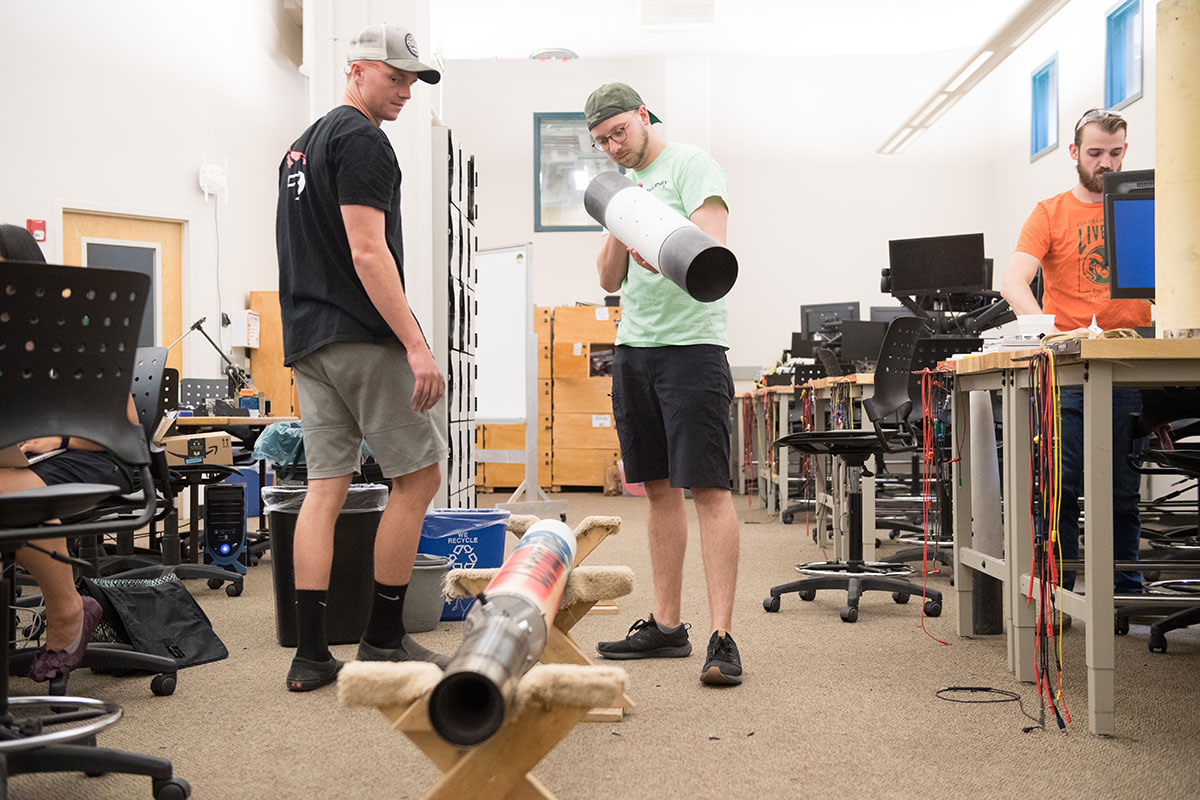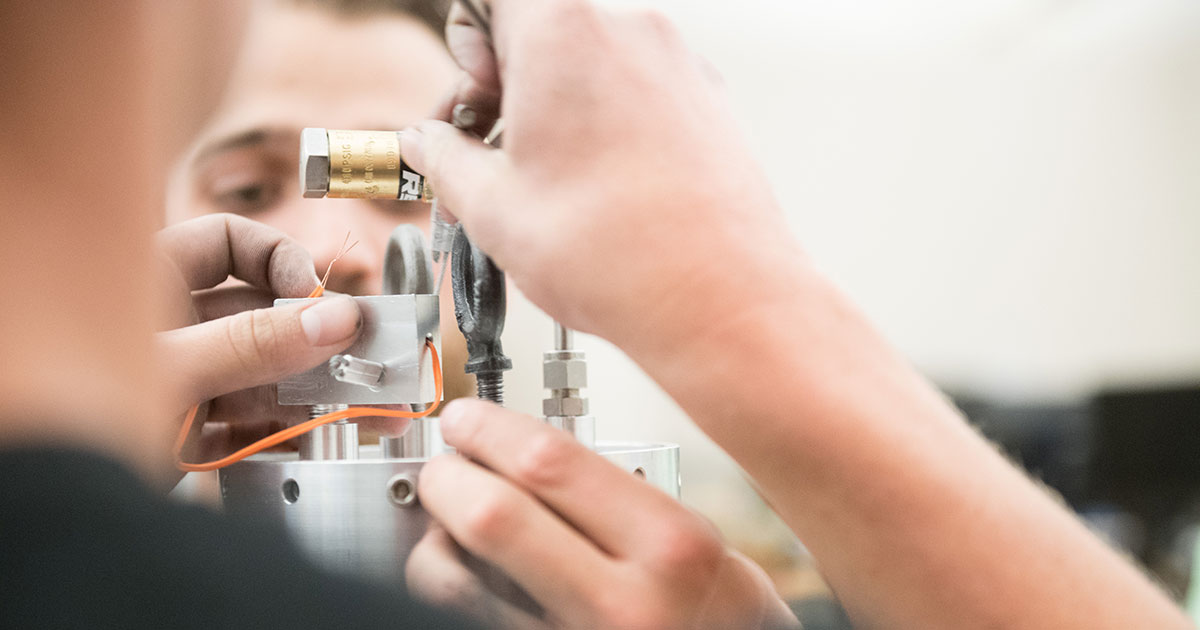Update: While they did not win an award, the students were the only team to launch a liquid rocket at the June 2019 competition AND they made it to 9,500 feet, which is more than twice as high as any liquid rocket ever traveled in the contest. Check out the video.

Wyatt Bryan, Trey Rosier and Wade Foreman assemble their rocket in the Engineering Building in preparation for competition. Photos by William A. Cotton/Colorado State University Photography
It was a sunny Friday afternoon, and the Colorado State University student rocket team was holed up in a windowless basement lab. Machined parts and wires lay strewn across a table. A 12-foot rocket was in pieces on the floor, about to be fitted with freshly machined aluminum fins.
After a year of designing, testing, machining and documenting, the CSU Ram Rocketry Team was headed into their final weekend before the 14th Intercollegiate Rocket Engineering Competition, to be held at the third annual Spaceport America Cup – and it was all hands on deck.
“We are always in crunch mode in this last month before competition,” said Trey Rosier, team lead. “But after a lot of long, tiresome nights, it’ll be great to see it all come together.”
The CSU team will pit their custom-made, liquid-fueled rocket against those of more than 122 collegiate teams, June 18-22 in Las Cruces, New Mexico. One by one, student-designed rockets laden with scientific payloads will blast from their launchpads and thread a blazing desert sky. The goal is to reach a height of 10,000 feet or more and parachute safely down, all parts intact. They will be judged in a host of categories, including flight performance, payload innovation, professional conduct and written technical reports.
This small CSU team – just 10 members, compared with other teams several times their size – is going big or going home. The CSU rocket, Aries V, is a far cry from the more familiar solid-motored, glorified model rocket. Nope – CSU’s rocket is powered by a much trickier ethanol and nitrous oxide liquid engine. It’s a complex design that student engineers have been refining since the team was founded in 2014. And it’s something that few other collegiate teams have even attempted.
“It’s always been part of CSU’s program to try and push the envelope of what we can do,” Rosier said. “Two years ago, we were the first team to successfully launch a liquid rocket engine. Last year, we had a successful launch and recovery. We want to continue to break those limits and become the first liquid rocket to reach 10,000 feet.”

At last year’s competition, CSU stole the show by being one of just two teams to successfully launch and recover their liquid-fueled rocket, Aries IV. They came away with an honorable mention prize and determination to enter an even better rocket this year.
This year’s team ran with last year’s successes, making key improvements to the combustion chamber to prevent pressure spikes – a concern in previous iterations. Aries V also features a lightweight, carbon composite airframe and active flight controls.
The students received invaluable support from their faculty advisers, Anthony Marchese and Stephen Guzik; graduate student and Ram Rocketry alumnus Iman Babazadeh; local rocketeer Edward Wranosky; and corporate sponsors Hewlett-Packard, Ursa Major Technologies and Prodigm. Working in the Prodigm lab, the students used a resin filament-winding process to improve their fuselage system, getting an inside view on cutting-edge aerospace engineering.
The best part of being on this team has been the learning process, said Paige Hosman, a member of the recovery team. “You learn about systems integration, teamwork, and keeping to a schedule.”
Rocket launches will take place Thursday and Friday of the week-long competition. Follow updates on the Spaceport America Cup website.
Student engineers put the finishing touches on their rocket the Friday before competition. Video by Lauryn Bushey/Walter Scott, Jr. College of Engineering